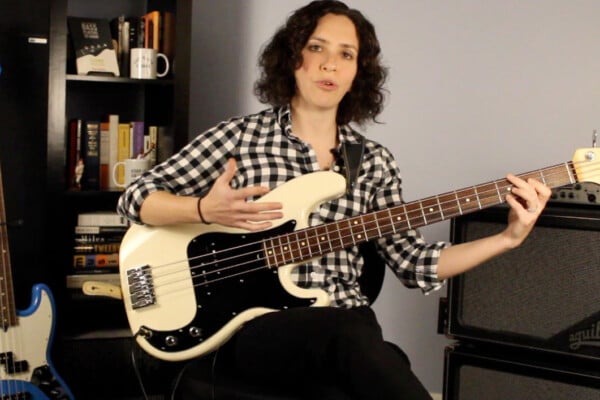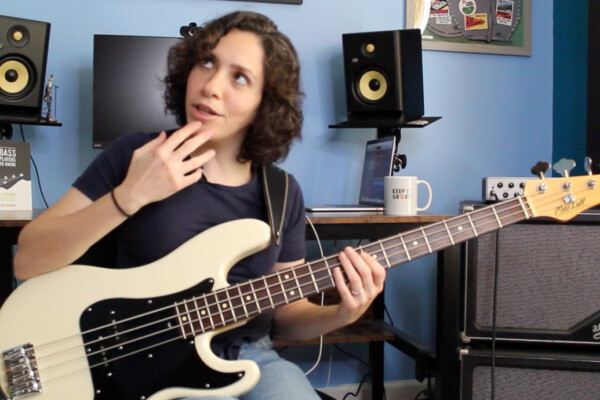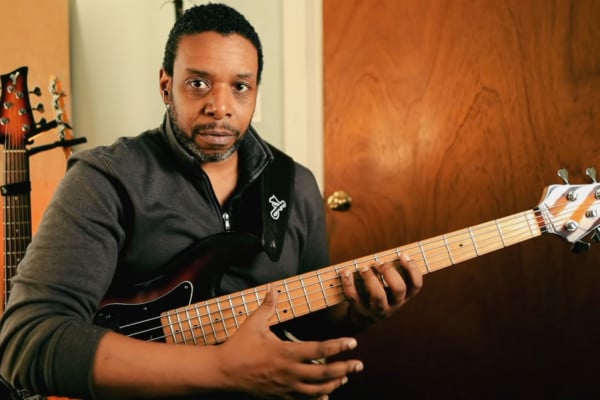Left Hand Thumb: Position
For all instrumentalists, excess tension should be a source of concern. We should work to eliminate it as much as possible. For string players, and especially bassists, excess tension can not only lead to technical and musical inaccuracies, but also to physical discomfort and injury. Sometimes these injuries can be resolved or worked around, other times they cannot. When serious enough, it can end a career. Suffice it to say that for bassists, excess tension should be a source serious individual inquiry, especially when it occurs in their hands.
When there is excess tension in the hands, the source is often improper use of the thumb and its corresponding muscles. The thumbs of both hands, just like all the fingers, should use minimum effort and pressure to achieve any particular technical goal. For the next two installments, I would like to talk about the left hand thumb.
Left Hand Thumb Positioning
There are many pedagogues who have differing opinions on exactly where the thumb should be placed. People are unique, and hands are equally unique. There is no “one size fits all approach.” Great pedagogues understand this, and this is why one on one instruction is always best. Having said that, I would suggest the following when determining your thumb position.
- Unless you are in action up and down a portion of the neck, (e.g. “pivoting” or using extensions) the thumb should, at a minimum, be placed opposite of the first finger. Opposite the second finger, or thereabouts, tends to work better with most hands. Often somewhere in between first and second finger provides the best balance greatest stretch. Even a thumb opposite the ring finger can work well depending on the hand and the action.
- Whatever its exact position, it should not be pointing toward the ceiling (upright players) or directly at the wall on your left (right handed-electric folks, reverse it for you lefties). In short, it should look like it does when you pick up a heavy glass full of your favorite beverage, not like a “thumbs up.” To my knowledge “Fonzie” was not a bass player.
- The thumb should not be locked in and should constantly change its position, based on the movement of the other fingers of the hand. This is true even when you are not extending or pivoting. The changes may be obvious, or extremely slight, and they are almost always unconscious. Rather than thinking about how to move your thumb when in a single position, “let” your thumb move where it needs. Release it as much as possible. Don’t try and keep it solidly in place. Let it move without restriction.
- There are pictures and videos everywhere that tell you where your thumb should be on the neck. Take them as guides, not gospel. When using them as guides, make sure the hand you are looking at resembles your hand in size, width and finger length. Otherwise you may run into some frustration, and possibly injury. In general, smaller hands will require the thumb to be slightly more to the “g side” of the board than larger hands. The same holds true for shorter and longer thumbs.
- If you are playing on the “G” string your thumb should be more on the “E” side of the neck, and vice versa. Let it move in a manner that keeps your hand shape consistent no matter what string you are playing on.
- It is ideal to keep the second joint of the thumb straight or slightly bent inward, i.e. do not bend it outward.
Next time: Left Hand Thumb: Pressure
Dr. Donovan Stokes is on the faculty of Shenandoah University-Conservatory. Visit him online at www.donovanstokes.com and check out the Bass Coalition at www.basscoalition.com.




dude the bass coalition workshop. now, THAT’S what ‘m talkin’ ’bout!
The next time on the thumb pressure, I look forward to it. I have a lot of thoughts on this one. Check out this:
https://docs.google.com/open?id=0ByWQwyDKGBM5ZmNjNDBiZWItMDIwYS00YTcwLThlZTktN2E3Y2JmZGFiZTI4